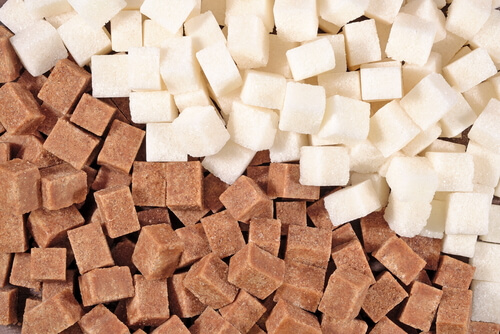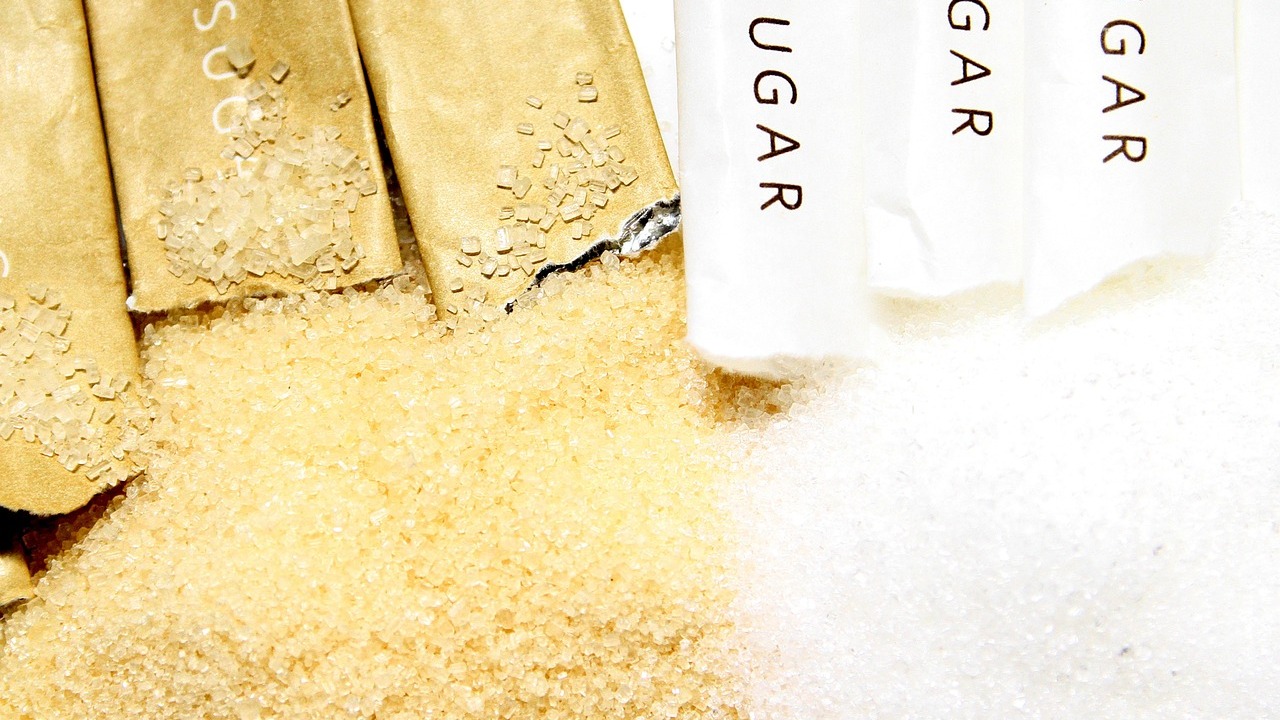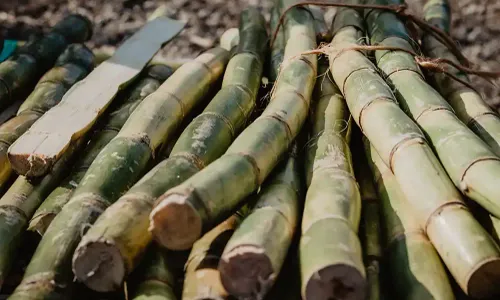Recognizing Sugar Beet Vs Sugar Cane: a Deep Study Their Handling and Applications
The contrast between sugar beet and sugar cane discloses important differences in their handling and use. Each crop has special farming methods that influence its geographical circulation. Sugar beetroots are primarily refined right into granulated sugar for different food, while sugar cane is often utilized in drinks. Understanding these differences drops light on their duties in the food industry and their economic importance. The broader ramifications of their growing and processing call for additional expedition.
Introduction of Sugar Beet and Sugar Cane
Sugar beet and sugar cane are 2 key resources of sucrose, each adding significantly to the international sugar supply. Sugar beet is an origin veggie, commonly harvested in cooler climates, while sugar cane is a high grass that grows in warmer exotic and subtropical areas. The handling of sugar beet includes washing, slicing, and extracting juice, followed by filtration and formation. In contrast, sugar cane processing consists of squashing the stalks to extract juice, which is then made clear and focused into sugar crystals.
Both crops are rich in sucrose, however their structure differs somewhat, with sugar cane normally having a higher sugar content. Each source additionally plays a duty in biofuel manufacturing, with sugar beet usually made use of for ethanol. While both are necessary for different applications, their distinct development demands and processing approaches affect their corresponding payments to the sugar market.
Geographic Circulation and Farming Conditions
Sugar beet and sugar cane are grown in unique geographic areas, influenced by their particular climate and dirt needs. Sugar cane flourishes in exotic climates, while sugar beet is much better fit for temperate areas with cooler temperatures. Comprehending these farming conditions is necessary for optimizing production and guaranteeing quality in both plants.
Global Expanding Regions
While both sugar beet and sugar cane are crucial sources of sugar, their international expanding regions vary substantially because of environment and soil needs. Sugar beet flourishes mostly in warm areas, with considerable manufacturing concentrated in Europe, The United States And Canada, and parts of Asia. These areas commonly feature well-drained, productive dirts that support the plant's development cycle. On the other hand, sugar cane is greatly cultivated in exotic and subtropical areas, with significant production hubs situated in Brazil, India, China, and Thailand. This crop embellishments in cozy, damp settings that promote its growth. The geographical distribution of these 2 plants highlights the adaptability of sugar cane to warmer climates, while sugar beet continues to be dependent on cooler, temperate conditions for peak development.
Environment Needs
The environment needs for sugar beet and sugar cane vary substantially, reflecting their adjustment to unique environmental conditions. Sugar beet grows in pleasant climates, requiring great to light temperature levels, preferably varying from 15 ° C to 20 ° C. It is delicate to frost and take advantage of well-distributed rains during its growing season. This crop is normally grown in areas such as Europe and North America.
Conversely, sugar cane flourishes in tropical and subtropical climates, favoring warmer temperatures between 20 ° C and 30 ° C - Sugar beet vs sugar cane. It requires abundant sunlight and consistent rains, making it well-suited to areas like Brazil, India, and Southeast Asia. The contrasting environment choices of these crops noticeably influence their geographical circulation and farming methods
Soil Preferences
Although both sugar beet and sugar cane need certain soil conditions to thrive, their choices vary substantially. Sugar beetroots grow in well-drained, loamy soils rich in raw material, with a pH varying from 6.0 to 7.5. These problems are commonly discovered in warm areas, specifically in Europe and North America. In comparison, sugar cane favors deep, productive dirts with superb drain and a slightly acidic to neutral pH (6.0 to 7.0) This crop is generally cultivated in exotic and subtropical climates, such as Brazil, India, and Australia. The geographic circulation of these crops mirrors their soil preferences, as sugar beetroots are fit for cooler climates, while sugar cane thrives in warmer, more moist atmospheres.
Harvesting and Handling Techniques
In taking a look at the harvesting and processing techniques for sugar beet and sugar cane, distinct approaches emerge for each plant. The comparison of collecting methods discloses variations in performance and labor demands, while extraction methods highlight differences in the preliminary handling stages. In addition, understanding the refining processes is essential for reviewing the top quality and yield of sugar generated from these 2 sources.
Gathering Methods Comparison
When taking into consideration the harvesting techniques for sugar beet and sugar cane, distinctive techniques emerge that mirror the special qualities of each plant. Sugar beet harvesting typically entails mechanical methods, using specialized farmers that root out the beets from the ground, getting rid of tops and dirt in the procedure. This technique enables reliable collection and minimizes crop damage. On the other hand, sugar cane harvesting can be either manual or mechanical. Hands-on harvesting entails workers cutting the stalks close to the ground, while mechanical harvesting uses huge equipments that cut, chop, and collect the cane in one operation. These differences in collecting techniques highlight the versatility of each plant to its expanding environment and the agricultural methods widespread in their corresponding areas.
Extraction Techniques Review
Extraction techniques for sugar production vary significantly between sugar beet and sugar cane, showing their special attributes and handling requirements. Sugar beets are usually collected utilizing mechanical farmers that reduced the roots from the ground, complied with by washing to remove dirt. The beetroots are then cut into slim items, referred to as cossettes, to help with the removal of sugar via diffusion or warm water removal. In contrast, sugar cane is normally gathered by hand or device, with the stalks cut short. After gathering, sugar cane undergoes crushing to extract juice, which is after that made clear and focused. These extraction methods highlight the distinctive strategies used based on the source plant's physical characteristics and the desired efficiency of sugar removal.
Refining Procedures Discussed
Refining processes for sugar from both sugar beet and sugar cane involve numerous essential steps that assure the end product is pure and suitable for intake. The raw juice extracted from either resource goes through explanation, where pollutants are gotten rid of utilizing lime and warmth. Following this, the juice is vaporized to focus the sugars. For sugar beets, the procedure commonly consists of carbonatation, while sugar cane may undergo an extra uncomplicated formation approach. As soon as focused, the syrup goes through formation, producing raw sugar. The raw sugar is detoxified with centrifugation and more refining, resulting in the white granulated sugar commonly located on store racks. Each action is vital in guaranteeing item high quality and security for customers.
Nutritional Profiles and Wellness Impacts

Health impacts connected with both resources greatly stem from their high sugar content. Excessive usage of sucrose from either source can cause weight gain, dental issues, and enhanced danger of chronic illness such as diabetes mellitus and heart condition. Sugar cane juice, often eaten in its natural form, may provide additional anti-oxidants and phytonutrients compared to polished sugar beet products. Eventually, moderation is key in making use of both sugar beet and sugar cane in diet regimens to minimize possible wellness dangers.
Economic Significance and Worldwide Production
The economic importance of sugar beet and sugar cane is substantial, given that both plants play necessary functions in the worldwide agricultural landscape. Sugar cane, mainly grown in tropical and subtropical regions, represent around 75% of the world's sugar production. Nations like Brazil and India are leading producers, contributing substantially to their nationwide economic climates through exports and neighborhood consumption.

The international sugar market is valued at billions of dollars, affected by different variables consisting of climate, trade plans, and consumer need. Accordingly, both sugar beet and sugar cane are crucial for economic security and development within the agricultural market worldwide.
Applications in the Food Industry
In the food market, sugar beet and sugar cane offer essential roles, offering sugar that are integral to a broad range of items. Both resources yield granulated sugar, which is a main component in baked items, beverages, and confections. Sugar beet, typically favored in regions with chillier environments, is generally found in processed foods such as jams, jellies, and dairy products. At the same time, sugar cane is preferred in tropical regions and is frequently utilized in drinks like rum and sodas.
Beyond granulated sugar, both resources are also processed into molasses, syrups, and various other sweeteners, improving flavor accounts and enhancing appearance in various applications. Furthermore, the byproducts of sugar production, such as pulp and bagasse, are utilized in producing animal feed and biofuels, better showing their adaptability. Overall, sugar beet and sugar cane are important components of the food industry, influencing preference, appearance, and total item high quality.
Environmental Factors To Consider and Sustainability
As concerns about climate modification and source depletion expand, the environmental impact of sugar beet and sugar cane growing has come under examination. Sugar cane, frequently grown in exotic regions, can result in deforestation and habitat loss, exacerbating biodiversity decline. Additionally, its farming regularly depends on intensive water usage and chemical plant foods, which can pollute neighborhood rivers.
On the other hand, sugar beet is normally expanded in warm environments and might promote soil health through plant turning. It additionally faces obstacles such as high water consumption and dependence on pesticides.
Both plants contribute to greenhouse gas exhausts during processing, yet sustainable farming methods are arising in both markets. These consist of precision agriculture, natural farming, and integrated insect monitoring. In general, the ecological sustainability of sugar manufacturing stays a pushing concern, necessitating constant evaluation and adoption click here to find out more of environment-friendly practices to reduce negative effects on environments and areas.

Regularly Asked Questions
What Are the Differences in Taste Between Sugar Beet and Sugar Cane?
The taste distinctions in between sugar beet and sugar cane are refined yet unique. Sugar beet tends to have a somewhat earthier flavor, while sugar cane uses Website a sweeter, extra fragrant profile, appealing to different culinary preferences.
Can Sugar Beet and Sugar Cane Be Utilized Mutually in Recipes?
Sugar beet and sugar cane can often be used interchangeably in recipes, though subtle differences in flavor and texture may occur. Substituting one for the other usually keeps the desired sweet taste in cooking applications.

What By-Products Are Produced From Sugar Beet and Sugar Cane Processing?
The processing of sugar beets and sugar cane returns different by-products. These include molasses, animal feed, and biofuels. Each byproduct serves unique purposes, adding to agricultural and industrial applications past the main sugar extraction.
Just How Do Sugar Beet and Sugar Cane Affect Dirt Health?
The impact of sugar beet and sugar cane on soil health and wellness varies; sugar beets can improve natural issue, while sugar cane might cause dirt deterioration otherwise taken care of correctly, affecting nutrient levels and soil structure.
Are There Specific Varieties of Sugar Beet and Sugar Cane?
Various specific varieties of sugar beet and sugar cane exist, each adapted to different environments and dirt kinds. These varieties are grown for characteristics such as yield, illness resistance, and sugar content, maximizing agricultural performance.